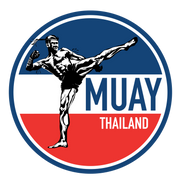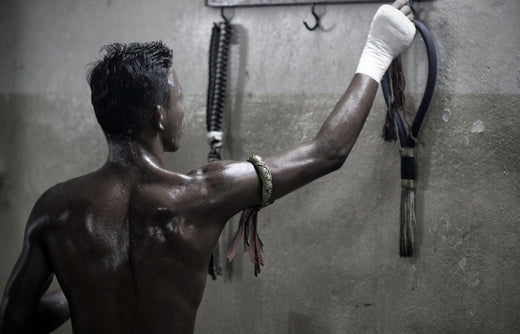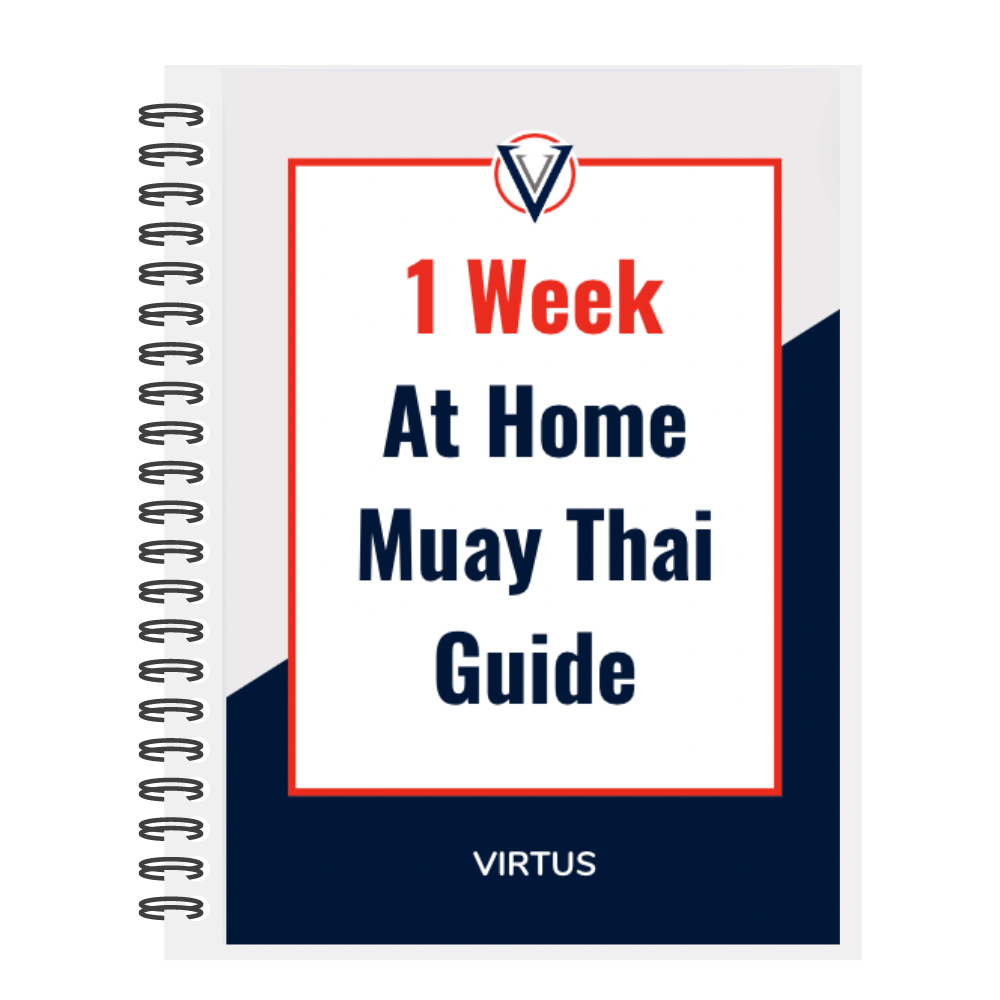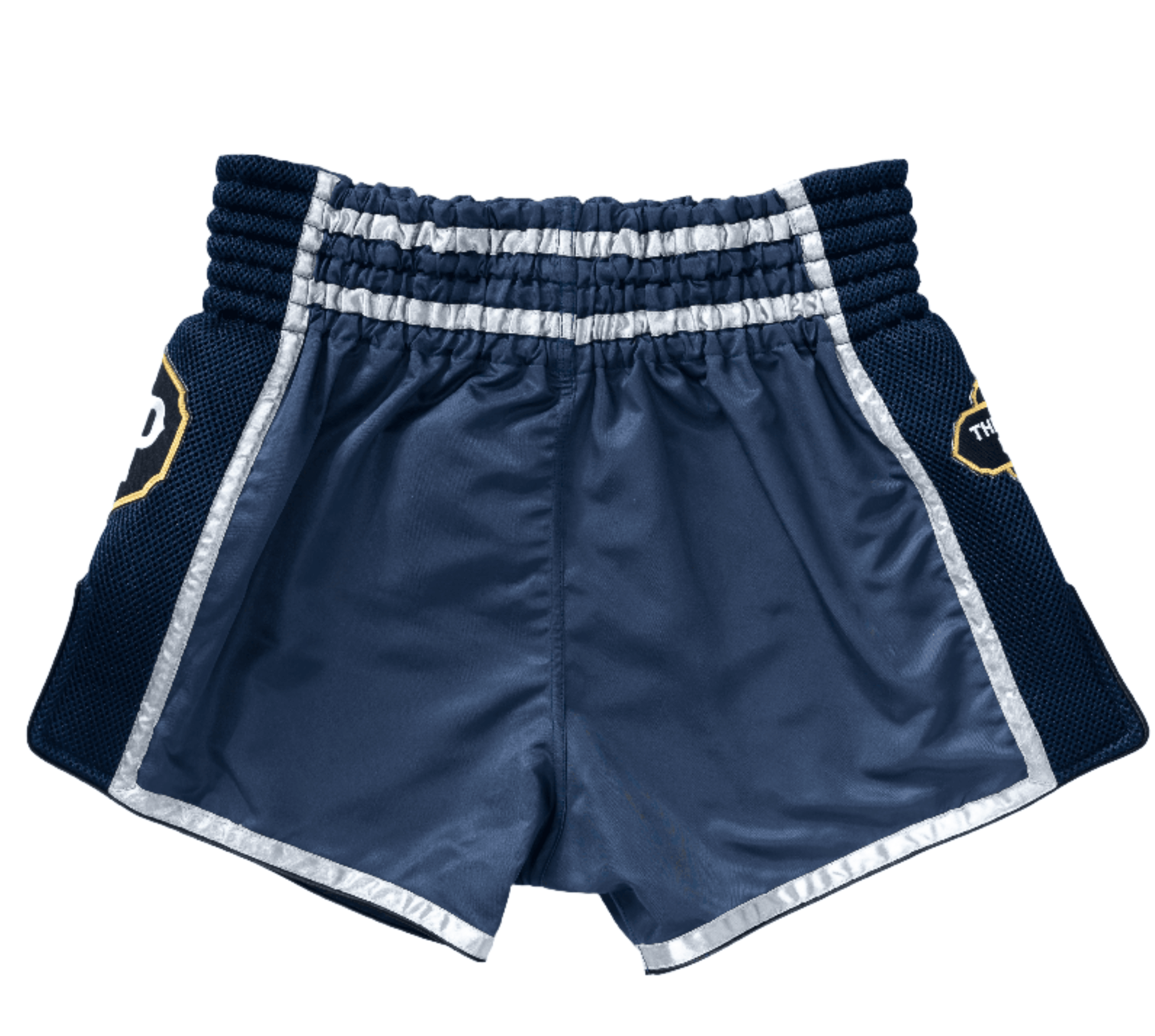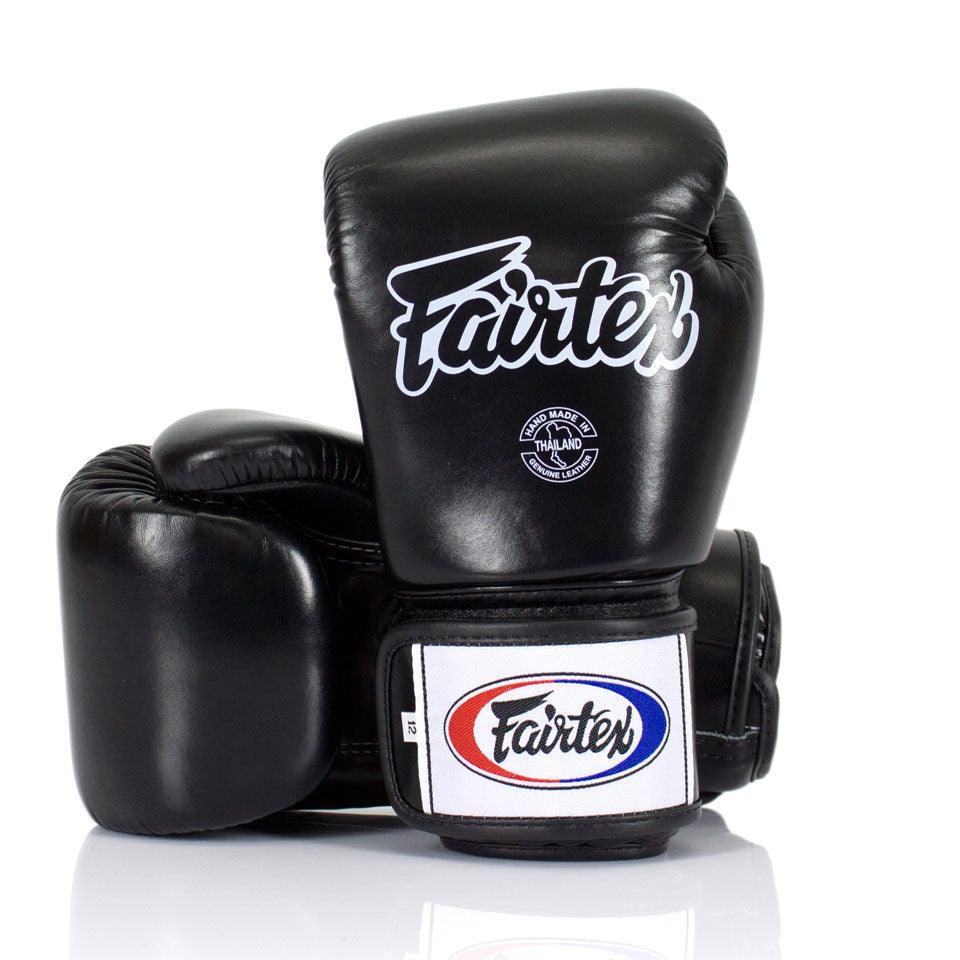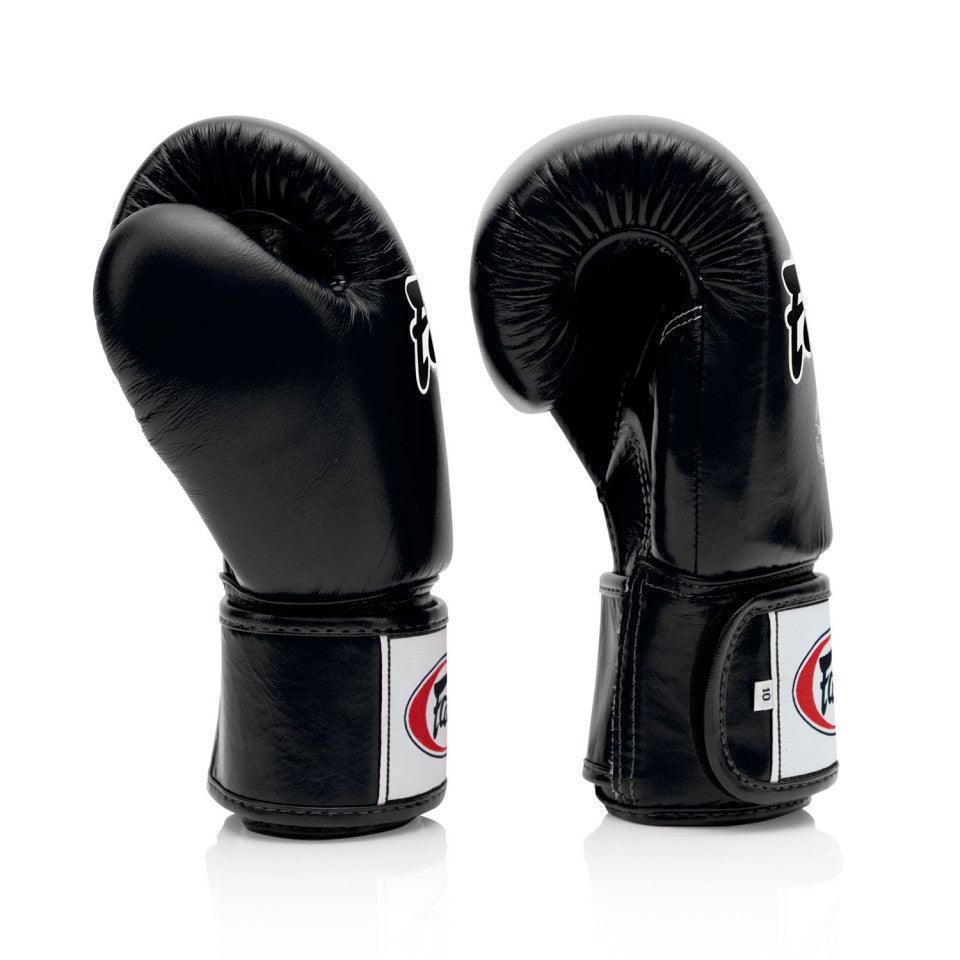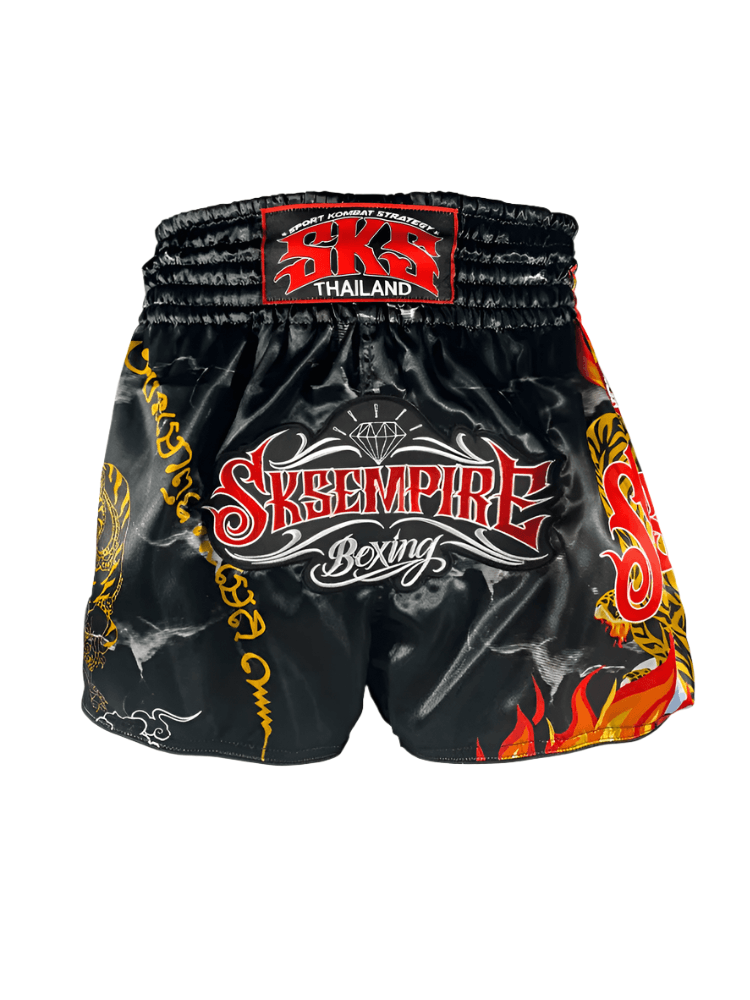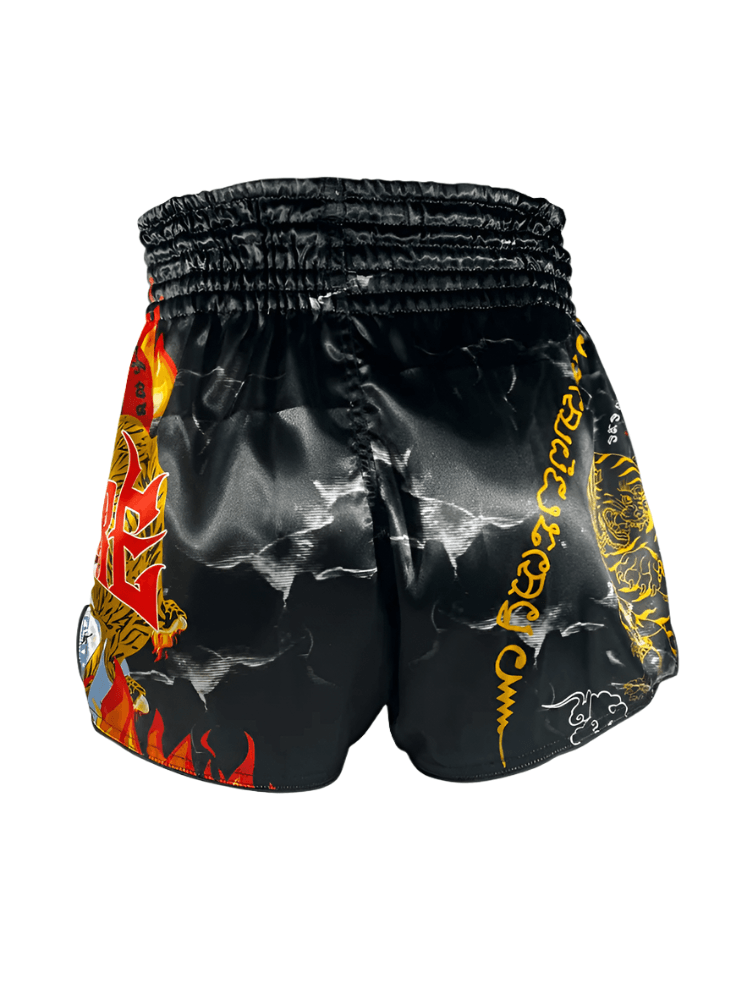Key Highlights
- Muay Thai, also known as Thai Boxing, is a martial art and combat sport originating in Thailand.
- It is unique because it combines punches, kicks, knee strikes, elbow strikes, and clinching techniques, making it the "art of the eight limbs."
- Muay Thai is not only a national sport in Thailand but also a cultural martial art deeply rooted in Thai history and culture.
- The origins of Muay Thai can be traced back to the Sukhothai Kingdom in the 13th century, where it was used by Thai soldiers for combat and self-defense.
- Over the years, Muay Thai has evolved and gained popularity both in Thailand and around the world, with professional competitions held across the globe.
- Training in Muay Thai not only improves physical fitness but also teaches discipline, mental toughness, and self-defense skills.
Introduction
Muay Thai, also known as Thai Boxing, is a martial art and combat sport that originated in Thailand. Unlike western boxing or other striking arts, Muay Thai is known as the "art of the eight limbs" because it combines punches, kicks, knee strikes, elbow strikes, and clinching techniques. This unique combination of techniques makes Muay Thai a highly effective and dynamic martial art.
Muay Thai is not only a national sport in Thailand but also a cultural martial art deeply rooted in Thai history and culture. It has been practiced for centuries and has evolved from a form of combat and self-defense to a popular sport and a way of life for many Thai people. Today, Muay Thai is practiced by millions of people worldwide, both as a competitive sport and as a means of improving physical fitness and self-defense skills.
Training in Muay Thai offers numerous benefits. It improves cardiovascular fitness, strength, flexibility, and overall physical conditioning. It also teaches discipline, mental toughness, and self-confidence. In addition to its physical and mental benefits, Muay Thai is also a way to connect with Thai culture and tradition, as it incorporates rituals and traditions such as the Wai Kru (a pre-fight ritual) and the Ram Muay (a dance performed before a fight).
Whether you are looking to compete at a professional level or simply want to improve your fitness and learn self-defense, Muay Thai offers a challenging and rewarding experience for people of all ages and fitness levels.
The Origins and Evolution of Muay Thai
The history of Muay Thai can be traced back to the 13th century in the Sukhothai Kingdom of Thailand. During this time, Thai soldiers used a martial art called Muay Boran, which incorporated punches, kicks, elbows, and knees. Over the centuries, Muay Boran evolved into the modern-day Muay Thai, which became the national sport of Thailand. Today, Muay Thai is not only practiced as a combat sport but also as a way to preserve Thai culture and tradition.
The Birth of Muay Thai
Muay Thai traces its roots back to a turbulent period in the 13th century. This combat sport has deep roots in Thai history, evolving from ancient fighting techniques used by Thai soldiers. Initially called "muay Boran," it transformed into the modern Muay Thai we recognize today. The sport gained popularity not only as a form of self-defense but also as entertainment for the royal court. Over time, formal rules were established, shaping Muay Thai into the traditional and cultural martial art of Thailand that it is known as today.
Muay Thai Through the Eras
Muay Thai has gone through several eras of evolution and development. One significant era in the history of Muay Thai is the reign of King Rama V in the late 19th century. King Rama V is credited with modernizing Muay Thai and promoting it as Thailand's national sport. During his reign, the first formal rules and regulations for Muay Thai fights were established, including the use of gloves and the prohibition of certain techniques. King Rama V also introduced weight classes and organized the first international Muay Thai competitions, which helped popularize the sport beyond Thailand's borders. His efforts played a crucial role in shaping modern Muay Thai and establishing its status as a respected martial art and combat sport.
The Cultural Significance of Muay Thai
Muay Thai is not just a martial art or a sport; it is deeply intertwined with Thai culture and tradition. The practice of Muay Thai involves various rituals and ceremonies that reflect the cultural heritage of Thailand. One such ritual is the Wai Kru, a pre-fight ritual, where fighters pay respect to their trainers, ancestors, and the art of Muay Thai. Another important cultural element of Muay Thai is the Ram Muay, a dance performed before a fight that showcases the fighter's skill, grace, and respect for the sport. These cultural elements make Muay Thai more than just a physical activity; it is a way for Thai people to connect with their history, culture, and values.

Muay Thai and Thai Culture
Muay Thai is deeply ingrained in Thai culture and is considered a cultural martial art of Thailand. It is arguably Thailands number 1 export, after Thai cuisine. Thai people have embraced Muay Thai as more than just a sport; it has become a way of life. The practice of Muay Thai teaches discipline, respect, and perseverance, which are highly valued in Thai culture. It also serves as a means of self-expression and a source of national pride. Muay Thai fights and competitions are attended by large crowds, and the sport is celebrated during festivals and special events. Muay Thai has become an integral part of Thai culture, reflecting the history, traditions, and values of the Thai people.
The Role of Muay Thai in Thai Ceremonies
Muay Thai plays a significant role in Thai ceremonies and festivals, often being showcased as a form of entertainment and cultural expression. During Thai festivals, such as the Songkran Festival or Loy Krathong Festival, Muay Thai fights and demonstrations are held to entertain the crowds. The Wai Kru and Ram Muay, the traditional rituals performed before Muay Thai fights, are also a part of many Thai ceremonies and festivals. These rituals not only showcase the skills and traditions of Muay Thai but also serve as a way to pay respect to the art, the trainers, and the ancestors. Muay Thai's presence in Thai ceremonies and festivals highlights its cultural significance and its status as a national sport of Thailand.

Fundamental Techniques of Muay Thai
Muay Thai is often referred to as the "art of the eight limbs" because it utilizes punches, kicks, knee strikes, and elbow strikes. These techniques make Muay Thai a comprehensive striking art that allows fighters to utilize their entire body as a weapon. The fundamental techniques of Muay Thai include various punches, such as jabs, crosses, hooks, and uppercuts. Kicks are delivered with the shins and can target various parts of the body, including the legs, body, and head. Knee strikes and elbow strikes are devastating close-range techniques that can cause significant damage to opponents. Mastering these fundamental techniques is essential for any Muay Thai practitioner.
The Art of the Eight Limbs: Understanding Muay Thai Techniques
Muay Thai is often referred to as the "art of the eight limbs" because it utilizes punches, kicks, knee strikes, and elbow strikes. These eight points of contact make Muay Thai a unique and comprehensive striking art. Elbow strikes are devastating close-range techniques that can cause severe damage to opponents. Fighters are trained to use different types of elbow strikes, such as horizontal, vertical, and spinning elbows, to maximize their effectiveness. Knee strikes are powerful techniques that can be delivered to various parts of the body, including the legs, body, and head. They are often used in close-quarters combat and can cause significant damage to opponents. The mastery of these eight limbs is what sets Muay Thai apart from other striking arts and makes it a highly effective combat sport.
Mastering the Basics: Stance, Movement, and Defense
Mastering the basics of Muay Thai is essential for any practitioner. It starts with developing the correct stance, which involves keeping the chin tucked in, the body upright, and the hands in a guard position to protect the head. Proper footwork and movement are crucial for maintaining balance, evading strikes, and setting up attacks. Defense techniques such as blocking, parrying, and dodging are essential for avoiding strikes and minimizing damage. They also create opportunities for counterattacks. By mastering the basics of stance, movement, and defense, Muay Thai practitioners can lay a solid foundation for their training and development as they progress in the art.
Developing Your Skills Further
As practitioners progress in their Muay Thai training, they can explore more advanced techniques to develop their skills further. These advanced techniques include feints, combinations, clinching, sweeps, and throws. Feints are used to deceive opponents and create openings for attacks. Combinations involve linking multiple strikes together to overwhelm opponents and create a fluid and unpredictable attack sequence. Clinching is a technique used for close-quarters combat, allowing fighters to control and strike their opponents from a clinched position. Sweeps and throws are advanced techniques used to off-balance opponents and gain a strategic advantage. These advanced techniques are often used by professional fighters in Muay Thai competitions and require a high level of skill, timing, and strategy.

Training for Muay Thai: A Guide for Beginners
For beginners interested in training in Muay Thai, there are several key aspects to consider. Finding a reputable Muay Thai training camp or gym is essential to receive proper instruction and guidance. Training typically involves a combination of technique drills, pad work, bag work, sparring, and strength training exercises. Beginners should focus on developing a solid foundation of Muay Thai techniques, including punches, kicks, knees, and elbows. Strength training is also important to improve overall physical fitness and power. With consistent and dedicated training, beginners can progress in their Muay Thai journey and improve their skills and fitness level.
How to Start Training in Muay Thai
If you're new to Muay Thai and want to start training, here's a step-by-step approach to get you started:
- Find a reputable Muay Thai gym: Look for a camp or gym that has experienced trainers, good facilities, and a positive training environment.
- Start with the basics: Begin by learning and practicing the fundamental techniques of Muay Thai, such as punches, kicks, knees, and elbows. Focus on mastering proper form and technique.
- Develop your fitness level: Muay Thai training is physically demanding, so it's important to work on improving your cardiovascular fitness, strength, and flexibility. Incorporate strength training exercises and conditioning drills into your training routine.
- Gradually increase intensity: As you become more comfortable with the basics, gradually increase the intensity of your training. This can include sparring sessions, pad work, and bag work.
- Stay consistent and dedicated: Consistency is key in Muay Thai training. Make a commitment to train regularly and stay dedicated to improving your skills and fitness level.
Remember, Muay Thai is a journey that requires time, patience, and perseverance. Enjoy the process and embrace the challenges as you progress in this ancient martial art.
Essential Equipment for Training
To train in Muay Thai, there are several essential pieces of equipment and gear that you will need. The most important piece of equipment is a pair of high-quality boxing gloves. Boxing gloves protect your hands and wrists during training and sparring sessions. It is recommended to invest in a pair of gloves that fit properly and provide adequate padding. One for bag and pad work (10 or 12 oz), another for drill work and sparring (14 or 16 oz).
Other important gear includes hand wraps, which provide additional support and protection for your hands and wrists, and shin guards, which protect your shins during kicks and blocks. Mouthguards are also recommended to protect your teeth and mouth during sparring.
Additionally, you may want to invest in Muay Thai shorts, which are specifically designed for training and allow for freedom of movement. Finding the perfect size of shorts can be difficult, so we recommend checking out our Muay Thai shorts size guide. Lastly, a proper gym bag is essential to carry all your gear to and from training sessions.
By investing in the right equipment and gear, you can train safely and comfortably, while also protecting yourself from injuries.
Tips for Finding the Right Gym
When it comes to learning Muay Thai, finding the right gym and trainer is crucial for your progress and safety. Here are some tips to help you find the perfect training environment:
- Research reputable training camps: Look for well-established training camps that have a good reputation in the Muay Thai community. These camps often have experienced trainers and a structured program.
- Check the credentials of the trainers: Ensure that the trainers have proper certifications and experience in teaching Muay Thai. Look for trainers who have trained professional fighters or have a solid background in the sport.
- Visit the gym in person: Take a tour of the gym and observe the training sessions. Pay attention to the cleanliness of the facilities, the equipment available, and the atmosphere of the gym. Trust your instincts and see if you feel comfortable in that environment.
- Consider the location: If you live in a small city or town, finding a dedicated Muay Thai gym may be challenging. In such cases, look for gyms that offer Muay Thai classes as part of their martial arts program, or consider online training options.
Finding the right gym and trainer is essential for your Muay Thai journey. Take your time to research and visit different options before making a decision.

The Physical and Mental Benefits of Muay Thai
Muay Thai offers numerous physical and mental benefits for practitioners:
Physical Fitness: Muay Thai training is a full-body workout that helps improve cardiovascular endurance, strength, agility, and flexibility. The intense training sessions burn calories, promote weight loss, and tone muscles.
Mental Health Benefits: Muay Thai training requires focus and discipline, which can help improve mental clarity and concentration. The sport instills a sense of discipline, self-confidence, and resilience, which can carry over into other areas of life.
Strength Training: Muay Thai techniques involve striking with all eight limbs, which helps develop overall body strength. The repetitive movements and conditioning exercises build muscular endurance and power.
Muay Thai is a holistic martial art that offers both physical and mental health benefits. It is a great way to stay fit, boost self-confidence, and improve overall well-being.
Boosting Physical Health
Muay Thai is a combat sport that provides a comprehensive workout for the entire body, promoting physical fitness and overall well-being. Here's how Muay Thai can boost your physical health:
- Cardiovascular Endurance: Muay Thai training involves high-intensity interval training (HIIT) that keeps the heart rate elevated for extended periods. This improves cardiovascular endurance, lung capacity, and overall stamina.
- Full-Body Workout: Muay Thai utilizes all eight limbs for striking, including punches, kicks, knees, and elbows. This engages multiple muscle groups simultaneously, providing a full-body workout that targets the arms, legs, core, and back.
- Strength Training: The repetitive nature of Muay Thai techniques, such as hitting pads and heavy bags, builds strength and muscular endurance. The conditioning exercises, such as push-ups, squats, and planks, further enhance overall strength.
- Flexibility and Agility: Muay Thai training includes dynamic movements that improve flexibility and agility. The constant footwork, pivoting, and twisting motions increase joint mobility and enhance overall body coordination.
By regularly practicing Muay Thai, you can improve your physical fitness, build strength, increase flexibility, and enhance overall body composition. It is a challenging and rewarding sport that offers a complete physical workout.
Mental Health Benefits
Muay Thai not only provides physical fitness benefits but also offers significant mental health benefits:
Focus: Muay Thai training requires intense concentration and focus. It demands your full attention, helping to improve mental clarity and the ability to stay focused in other areas of life.
Discipline: Muay Thai training instills discipline as it requires regular practice, commitment, and adherence to training routines. This discipline can extend beyond the gym and positively impact other aspects of your life.
Resilience: Muay Thai training pushes you to your limits, both physically and mentally. It teaches you to overcome challenges, push through fatigue, and develop mental resilience, which can help in dealing with everyday stress and adversity.
Self-Confidence: As you progress in your Muay Thai journey, you gain self-confidence and belief in your abilities. Overcoming physical and mental challenges in training instills a sense of accomplishment and boosts self-esteem.
Practicing Muay Thai can improve mental focus, discipline, resilience, and self-confidence. It is a sport that not only strengthens the body but also fosters mental well-being.

Muay Thai in the Global Arena
Muay Thai has gained significant recognition in the global arena and has become a popular combat sport worldwide. Here's why Muay Thai has made a mark internationally:
International Competitions: Muay Thai competitions are held in various countries, attracting both amateur and professional fighters from around the world. These competitions showcase the skills and techniques of Muay Thai fighters on an international stage.
Mixed Martial Arts: Muay Thai has become an integral part of mixed martial arts (MMA), a combat sport that combines different fighting styles. Many MMA fighters incorporate Muay Thai techniques into their fighting repertoire due to its effectiveness and versatility.
Global Recognition: Muay Thai's unique fighting style, with its emphasis on strikes using all eight limbs, has captivated audiences worldwide. The sport's deep-rooted history and cultural significance have contributed to its global recognition.
Muay Thai's popularity in the global arena continues to grow, with more and more people embracing this dynamic and exciting combat sport. It has become a symbol of strength, skill, and cultural heritage.
Muay Thai in International Competitions
Over the years, Muay Thai has gained significant traction in international competitions, leading to the rise of Thai fighters on the global stage. There's a few reasons why it's continuining to grow it's global audience:
Excellence in Technique: Thai fighters are known for their exceptional technique and skill in Muay Thai. Their mastery of striking with all eight limbs, combined with precise timing and footwork, has earned them recognition and success in international competitions.
Adaptability in Different Fighting Styles: Muay Thai fighters have demonstrated their ability to adapt to different fighting styles in international competitions. They have integrated Muay Thai techniques with other combat styles, showcasing their versatility and effectiveness. Muay Thai fighters have also competed with, and beaten, world class martial artists from other disciplines.
Promotion of Thai Culture: Through their participation in international competitions, Thai fighters have become ambassadors of Thai culture. Their performances showcase the rich history and traditions of Muay Thai, earning respect and admiration from fans worldwide.
The rise of Muay Thai in international competitions has put Thai fighters on the map, earning recognition for their skills, technique, and contributions to the sport. They continue to inspire future generations of Muay Thai practitioners and represent the sport with pride.
Prominent Thai Fighters and Their Impact Worldwide
Prominent Muay Thai fighters from Thailand have made a significant impact on the global stage, showcasing the effectiveness and beauty of the sport. Here's three that have made an indelible mark:
- Buakaw Banchamek: With his explosive style and powerful strikes, Buakaw Banchamek has become one of the most recognizable Muay Thai fighters worldwide, primarily thanks to his success in the K1 series. He has won numerous titles and holds a strong following of fans.
- Saenchai: Saenchai is known for his technical brilliance and unorthodox fighting style. His ability to seamlessly transition between different striking techniques and evade opponents' attacks has made him a legend in the sport.
- Yodsanklai: Yodsanklai is a devastating striker with incredible power. He has achieved success in both Muay Thai and kickboxing competitions, further solidifying his reputation as one of the best fighters in the world.
These fighters, among many others, have not only achieved success on an individual level but have also helped raise the profile of Muay Thai on a global scale. Their skill, passion, and dedication to the sport have left a lasting impact and inspired future generations of Muay Thai fighters.
Conclusion
Muay Thai stands as a testament to the rich history and cultural significance of Thailand. Its evolution from ancient combat tactics to a globally recognized martial art showcases its enduring appeal and effectiveness. By mastering the fundamental techniques, embracing its physical and mental benefits, and participating in the global arena, enthusiasts can explore a world of tradition, discipline, and resilience. Whether for self-defense, fitness, or competition, Muay Thai offers a holistic approach to personal growth and skill development. Embrace the art of the eight limbs to embark on a journey of self-discovery and empowerment through this ancient martial art.
Frequently Asked Questions
Can Muay Thai be Practiced for Self-defense?
Yes, Muay Thai can be practiced for self-defense. It teaches practical striking techniques using all eight limbs, as well as clinching and defensive strategies. Muay Thai training can help build confidence and improve personal safety skills.
What Age is Appropriate to Start Learning Muay Thai?
There is no strict age requirement to start learning Muay Thai. Children as young as four or five can begin training, but it is important to ensure age-appropriate instruction and a focus on safety.
How Does Muay Thai Compare to Other Martial Arts?
Muay Thai is a striking art that focuses on using all eight limbs for attacking and defending. It differs from other martial arts in its emphasis on clinching, knee strikes, and elbow strikes. Muay Thai is also a key component of mixed martial arts (MMA) due to its effectiveness in stand-up fighting.
Can girls do Muay Thai?
Absolutely! Muay Thai is open to everyone, regardless of gender. Girls can train and compete in Muay Thai, and it offers numerous benefits such as self-defense skills, fitness, and empowerment.
